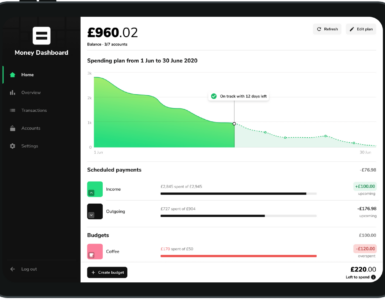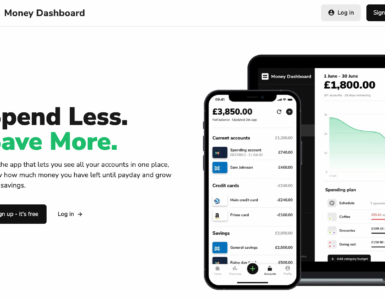In today’s unpredictable world, having a robust emergency fund is essential for financial security and peace of mind. Emergencies can strike unexpectedly, such as medical emergencies, sudden job loss, or major home repairs, leaving us financially vulnerable.
To shield ourselves from such uncertainties, the 6-Month Rule offers a practical and effective approach. By aiming to have at least six months’ worth of living expenses in your emergency fund, you can create a solid financial safety net that provides greater security during challenging times.
The Importance of an Emergency Fund
An emergency fund is a dedicated savings account specifically set aside to cover unexpected expenses or financial setbacks. It acts as a safety net, providing a financial cushion during times of crisis.
Relying on an emergency fund ensures that you do not have to rely on credit cards, personal loans, or borrowing from friends or family, which can lead to mounting debt and financial stress.
Having an emergency fund is particularly crucial for individuals without a stable source of income, such as freelancers or gig workers. It can also benefit those who have dependents, ensuring that their financial commitments are met, even during difficult times.
Whether it’s an unforeseen medical expense or a sudden repair, an emergency fund offers peace of mind, allowing you to focus on resolving the situation without financial worries.
The 6-Month Rule: Aiming for Six Months’ Worth of Living Expenses
The 6-Month Rule is a financial guideline that suggests building an emergency fund that covers at least six months’ worth of living expenses. Unlike the 3-Month Rule, which aims for a three-month cushion, the 6-Month Rule provides an even more robust safety net.
By having six months’ worth of living expenses readily available, you can weather more prolonged periods of financial instability or unexpected events without compromising your financial well-being.
Step-by-Step Implementation
- Assess Your Living Expenses
Begin by evaluating your monthly living expenses. Create a comprehensive list of essential costs, such as rent or mortgage payments, utilities, groceries, transportation, insurance, and any necessary loan payments. Be thorough and precise in your calculations, as this forms the foundation for determining your emergency fund target.
Review your expenses from the past six months to get a clear understanding of your spending patterns. This analysis will help you identify areas where you can cut back on discretionary spending and direct more funds towards your emergency fund.
- Set a Realistic Goal
Based on your evaluation, set a realistic goal to save at least six months’ worth of living expenses. This goal should be challenging but attainable, and it may take time to achieve. Be patient and stay committed to your long-term financial security.
Divide your target amount into smaller milestones to track your progress and celebrate your achievements along the way. Each milestone reached will provide a sense of accomplishment, motivating you to continue building your emergency fund.
- Start Saving Regularly
Building an emergency fund requires consistent effort and discipline. Start by setting aside a portion of your income regularly into a separate savings account dedicated to your emergency fund. Automate this process to ensure that you save consistently, even when unexpected expenses arise.
Consider using financial apps or online banking tools that facilitate automatic transfers to your emergency fund. This automated approach will ensure that saving becomes a non-negotiable part of your financial routine.
- Minimise Non-Essential Spending
As you work towards your emergency fund goal, be mindful of non-essential spending. Identify areas where you can cut back on discretionary expenses, such as dining out, entertainment, or impulse purchases. Redirect the money saved from these cutbacks into your emergency fund.
Challenge yourself to adopt a frugal mindset without sacrificing your overall well-being. Seek cost-effective alternatives for leisure activities, explore discounts or deals, and practice mindful spending to maximize your savings.
- Utilize Windfalls and Bonuses
Take advantage of unexpected windfalls or bonuses, such as tax refunds, work bonuses, or monetary gifts. Instead of using these funds for indulgences, allocate a portion or the entirety of such windfalls into your emergency fund. Doing so will accelerate your progress and provide an extra boost to your financial safety net.
Avoid considering windfalls as free money to be spent frivolously. View them as valuable opportunities to strengthen your financial security and remain committed to your long-term financial goals.
- Stay Consistent and Adaptable
Consistency is key to building a strong emergency fund. Stay committed to your savings plan, even during times when saving may feel challenging. Remain adaptable to changing circumstances and adjust your savings strategy as needed to accommodate life events or fluctuations in income.
Regularly review your emergency fund to ensure that it remains aligned with your evolving needs. As your financial situation changes, your emergency fund target may need to be adjusted accordingly.
The 6-Month Rule is a powerful financial strategy that emphasises the importance of having at least six months’ worth of living expenses in your emergency fund. Building an emergency fund requires dedication, patience, and a commitment to your long-term financial well-being.
By following the step-by-step implementation guide, you can create a solid financial safety net that provides greater security during challenging times. Your emergency fund will offer peace of mind, knowing that you have the financial flexibility to navigate through unexpected events without derailing your financial goals.
Consider leveraging financial tools and apps to streamline your savings journey. By combining the 6-Month Rule with automated savings features, such as direct deposits and financial apps, you can expedite the process of building your emergency fund.
Embrace the 6-Month Rule, and take control of your financial well-being today. Your journey towards greater financial security begins with a single step – start building your emergency fund now, and prepare yourself for a more financially resilient future.






